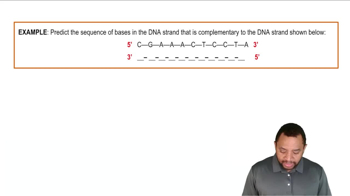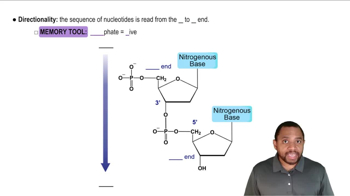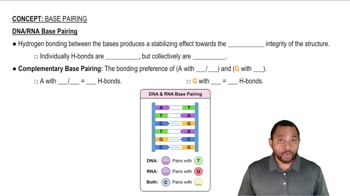Write the complementary sequence of bases for each DNA strand shown next.
a. 5′T-A-T-A-C-T-G 3′
 Verified step by step guidance
Verified step by step guidance Verified video answer for a similar problem:
Verified video answer for a similar problem:



 3:27m
3:27mMaster DNA Double Helix Concept 1 with a bite sized video explanation from Jules
Start learning